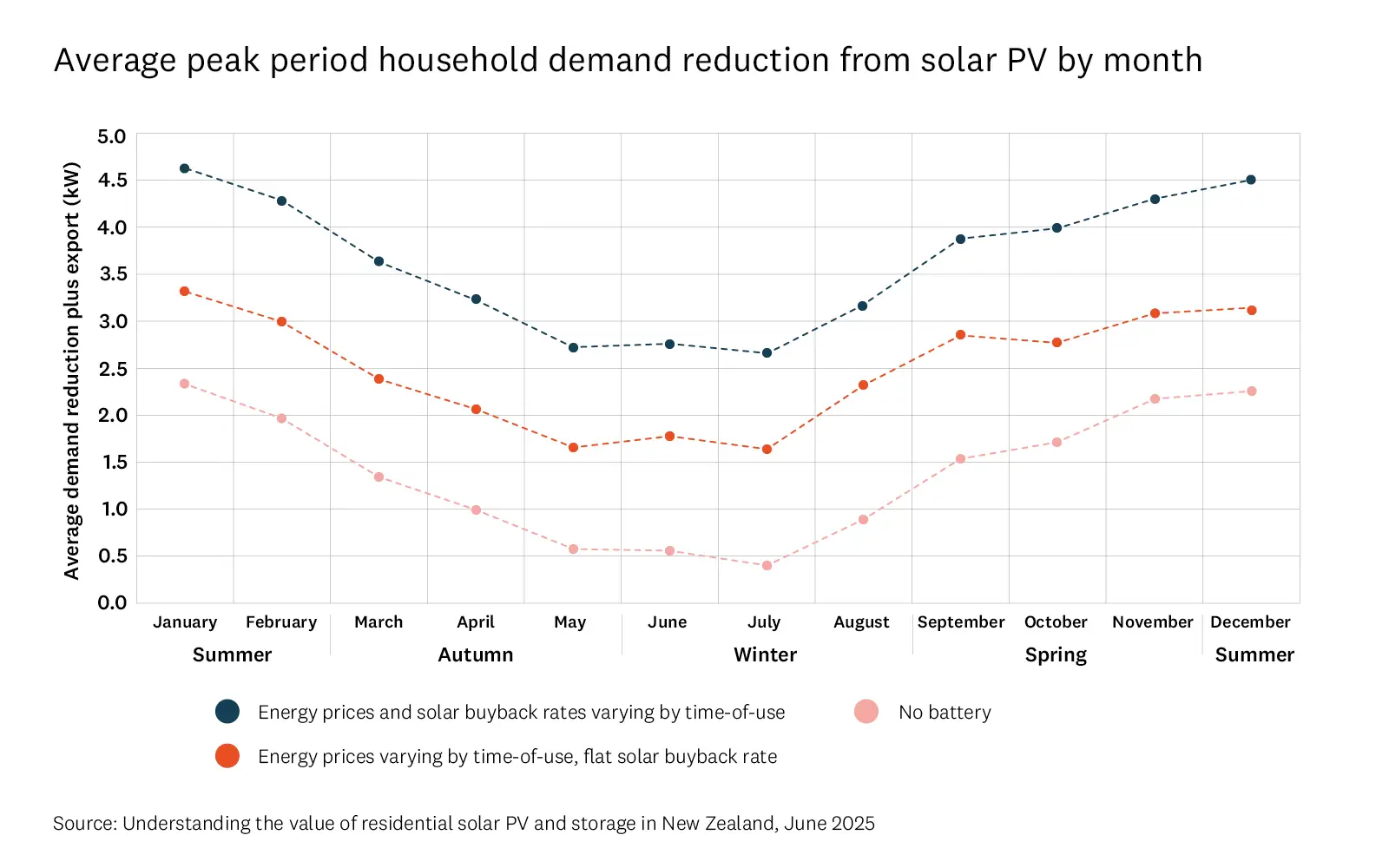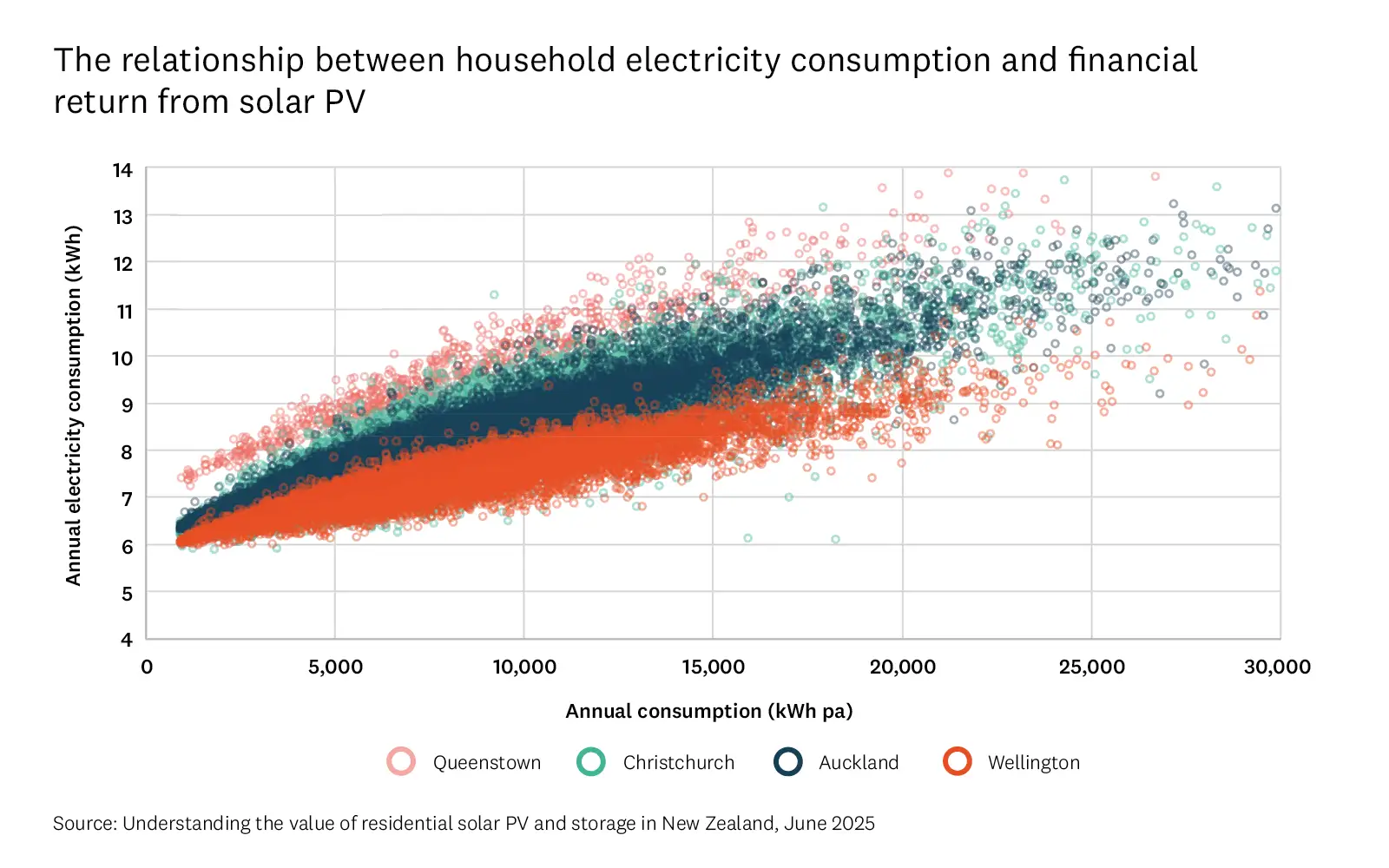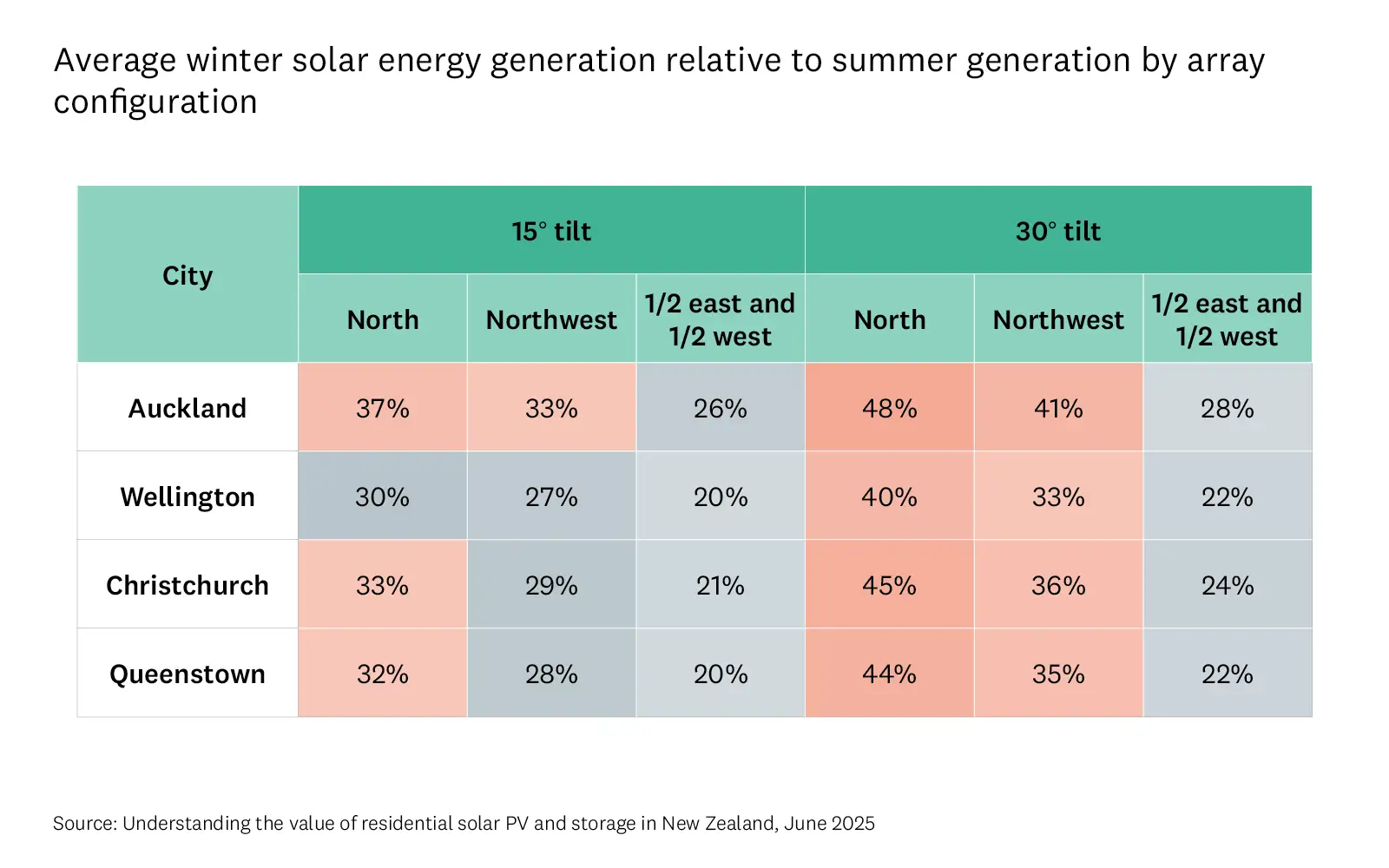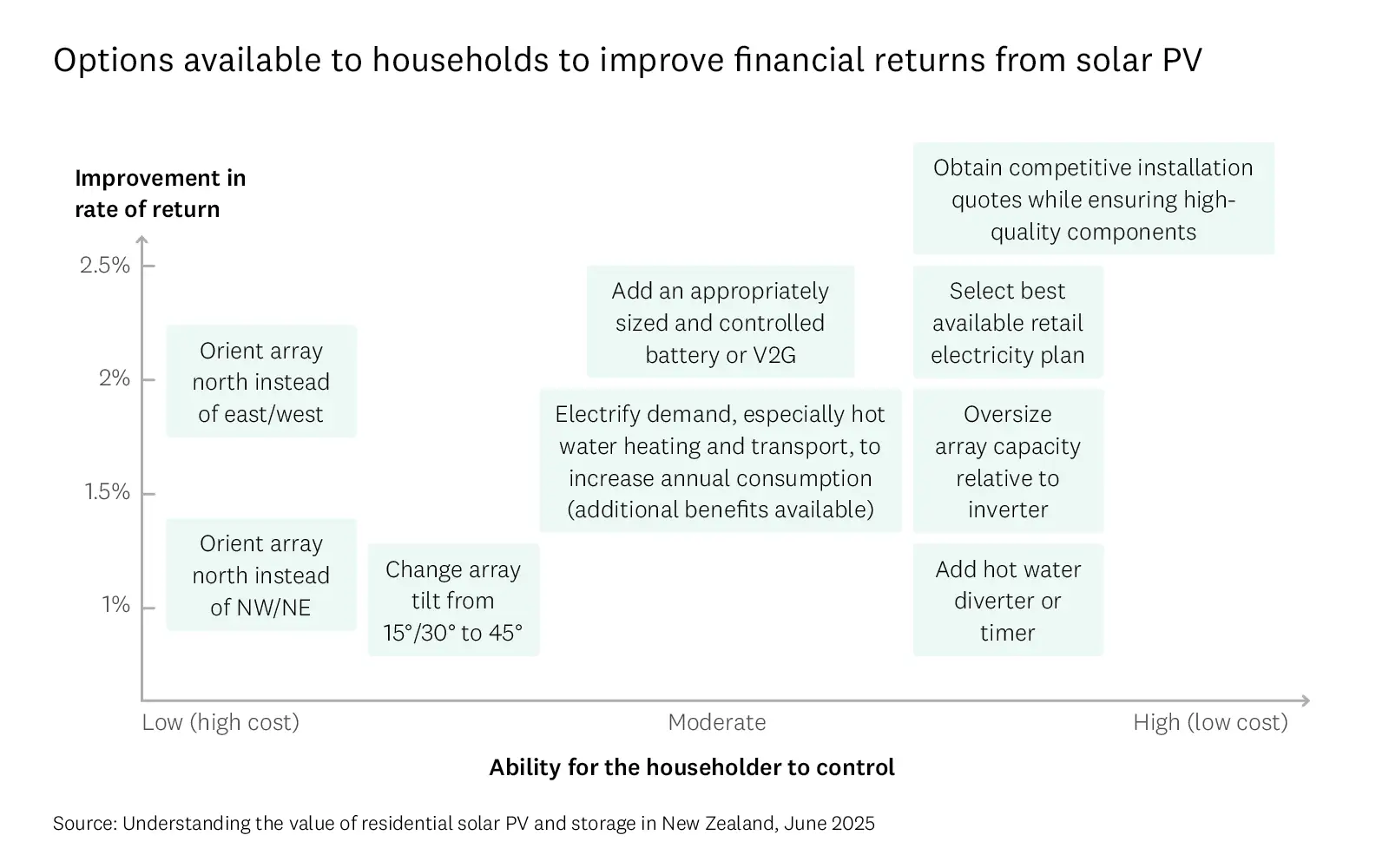Up the Kilowahs! Checkout the EDB Scoreboard



An indepth study by EECA that aimed to show "where and under what conditions does investing in solar PV make sense?” has shown that rooftop solar "is likely to be financially viable for a significant proportion of New Zealand households, particularly for those who consume a lot of energy".
As the report outlined:
Households that consume more electricity, particularly in the morning and daytime, see the best financial returns from solar PV.The more appliances that are powered by electricity, the more self-generated solar energy can be used directly, reducing reliance on grid electricity.
While waste should always be avoided, more household consumption means a greater opportunity to replace grid electricity with self-generated solar energy. Homes that use more power during the morning (7-11am) and daytime benefit the most since solar generates electricity during these hours.
Households that switch from gas to electric heating, cooking, and water heating will benefit more from solar PV. Charging an electric vehicle (EV) at home during the day can significantly increase solar self-consumption.
This graph shows the average modelled reduction in demand from solar PV, including exports, during peak periods (7-11am and 5-9pm) by month of the year for households in Christchurch with typical demand profiles (assuming a 10 kW-ac PV system and 10 kWh battery). Note that time-of-use buyback prices produce a greater peak period demand reduction year-round than flat buyback prices, although slightly less benefit is seen during winter months. Very little peak period demand reduction is seen from May to July without a battery.

Location matters
Financial returns vary across cities, depending on electricity prices in each area and a solar resource which depends on the local climate. Results show that, in contrast to common assumptions, southern locations in New Zealand are not necessarily worse for solar PV.
This research modelled solar PV system operation using real-world 30-minute demand data from almost 50,000 homes across 4 New Zealand cities for a full year:
Queenstown
Auckland
Christchurch
Wellington
For all of the above, the appropriate storage solutions can boost IRR by 1-2%. However, this additional benefit is sensitive to pricing structures, storage technology costs, and the households’ particular usage profile.
Time-of-use pricing can further improve returns if a battery is included in the installation.

North-facing panels with a tilt of 30° or more are best. East- and west-facing panels don’t meaningfully improve generation during peak periods in New Zealand.
Most solar PV panels in New Zealand are installed facing as close to north as possible to maximise total electricity generation. However, some homeowners choose to install east- and west-facing arrays to try and match their solar generation and energy use more closely.
Here’s how they compare:
North-facing panels (typical setup)
East-west-facing panels
East- and west-facing solar arrays do not significantly improve the ability of solar PV to reduce peak electricity demand in winter. Even in northern regions, solar generation remains too low in the early mornings and late evenings to make a meaningful difference during peak demand periods.

Batteries are the only real solution that will allow peak morning and evening demand to be met with local supply, but they need to fall further in price.
Batteries can increase the financial benefits from solar PV but remain too expensive for many households in New Zealand.
Instead of batteries, hot water diverters and timers can improve returns with lower upfront costs by making use of existing hot water cylinders to store solar energy.
EV batteries could also be used for storage, with Vehicle-to-Grid (V2G) technology, but key challenges remain, such as V2G charger costs and limitations imposed by battery warranties from some vehicle manufacturers.
Households have a variety of options available to improve the value of solar PV to them.
For example, one of the easiest things to do with a large impact on financial return is to shop around solar installers to find the best deal, then checking offered components online to make sure they are reliable and sourced from reputable manufacturers.
A close second is ensuring you are on the best available electricity retail plan considering the solar system you plan to install.
Storage is an option which can boost overall returns from solar PV, but the right choice of capacity and technology will depend on component costs, your location, electricity plan, and consumption profile, and even how much control you have over energy-consuming devices in your home.


How the sun led to higher salaries for teachers in the US and why this should be happening here, too; how "the once-rigid link between economic growth and carbon emissions is breaking across the vast majority of the world" as electrification gives more countries a productivity boost (and how that would allow New Zealand to keep embracing our long, languid summer break); solar continues to weather storms and provide 'free resilience'; Dunedin laundry company Preens goes electric and saves over 300 utes worth of emissions; the company that wants you to drink diesel exhaust; and a wonderful rundown of the Kill Bills tour - and the national electrification opportunity - from one of the tour sponsors.
Read moreDownload
As gas supplies decline and prices rise, electrification is the best bet, but it's hard for big businesses without government support. Kirsty Johnston talks to Rainbow Nurseries about how it made the switch with help from a grant, and others who are unsure they will be able to keep getting gas. As one busines owner said: "We never considered the risk to the business of not actually having natural gas," one participant said. "We always expect that the price could fluctuate… But we never anticipated maybe having no gas coming from the pipeline." There are ways for the Government to help. And there is a huge amount of new renewable electricity coming on stream, so there won't be a shortage of electrons.
Read moreDownload
Marc Daalder reports on Vector's declining gas network and how it is responding to falling customer numbers. As he writes: "Gas in Auckland is formally past its peak in the latest forecasts from Vector, the city’s only gas distribution business, with new connections set to fall to zero in three years ... From 2029, there would be no new residential or commercial connections – with new industrial connections projected to have already ceased this year."
Read moreDownload